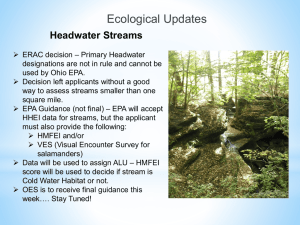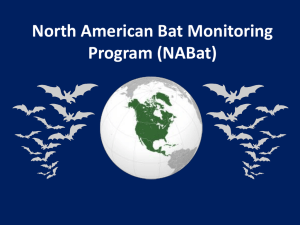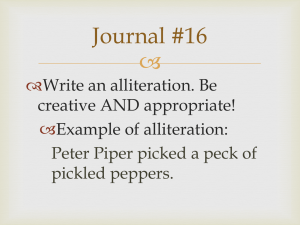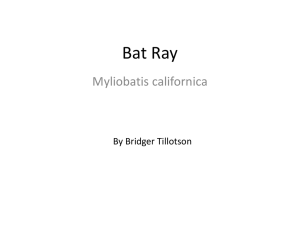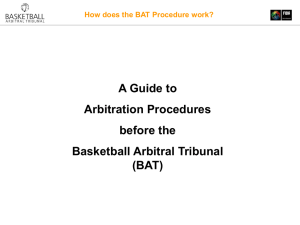B_Eco updates EUM -3
advertisement
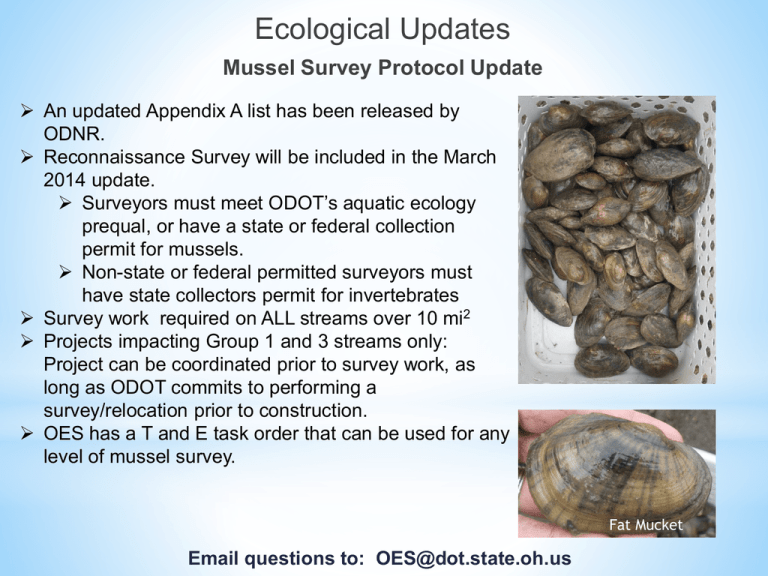
Ecological Updates Mussel Survey Protocol Update An updated Appendix A list has been released by ODNR. Reconnaissance Survey will be included in the March 2014 update. Surveyors must meet ODOT’s aquatic ecology prequal, or have a state or federal collection permit for mussels. Non-state or federal permitted surveyors must have state collectors permit for invertebrates Survey work required on ALL streams over 10 mi2 Projects impacting Group 1 and 3 streams only: Project can be coordinated prior to survey work, as long as ODOT commits to performing a survey/relocation prior to construction. OES has a T and E task order that can be used for any level of mussel survey. Fat Mucket Email questions to: OES@dot.state.oh.us Ecological Updates Federal Species Update Northern Long-eared Bat (Myotis septentrionalis) has been proposed as endangered by USFWS for all counties in Ohio. Final Listing expected by October 2014. Similar habitat requirements for Indiana bat, but there are differences. Northern Long-eared Bat Interim Conference and Planning Guidance, January 6, 2014 Describes Winter and Summer Habitat Winter Habitat (hibernacula) is underground caves and cave like structures Summer Habitat- Suitable roost trees are trees with DBH of 3 inches or greater that exhibit features such as exfoliating bark, crevices, cavities, or cracks May utilize artificial roosts (barns, sheds, bridges) but not common and does not appear that USFWS is trying to regulate these as of yet Federal Species Updates This species needs to be included in all new ESRs (Federal Species table). Conferencing (informal or formal) for this species is required for the following: All new projects that “may affect” this species Projects that have already been coordinated with USFWS, and: The project “may affect” the northern long-ear CE is not complete and/or PCN is needed Project will not be constructed prior to October 2014 USFWS “Blanket Concurrence” for projects that have already been coordinated: Project was coordinated as a May Affect, Not Likely for Indiana bat, and USFWS concurred with ODOT’s effect call ODOT has committed to or can commit to seasonal cutting (tree removal only between October 1 and March 31). Northern Long-ear bat has not been captured at that site (if survey work was done). This concurrence needs to be documented in the CE and seasonal cutting needs to be included as an environmental commitment Does not apply to projects that were PC-3 for Indiana bat. Ecological Updates Indiana Bat Programmatic Biological Opinion/Agreement Currently operating under 2007 Programmatic Agreement, extended through January 31, 2016. A federal mediator has been hired to help with the agreement. Kickoff meeting 3/7. Ongoing negotiations with USFWS regarding impact analysis, determination of effect(s), conservation measures Conservation measures (mitigation) has been especially challenging Complicated by the proposed listing of the northern long-eared bat. OES is to set up conservation areas in both the new Eastern and Western Management Units. SCCC2 bat conservation area has been approved for use statewide. This will continue until agreement is completed, and will be allowed for a few years after the agreement is signed. Consultant conducted a search for mitigation in the Western MU, and OES is reviewing the report to make a short list of options. The Research Bank (M6-a) is no longer a mitigation option in the west and central management units. Mitigation ratios have not been set. A debit list for SCCC2 has been created. Ecological Updates Indiana Bat Survey Protocol 2014 Summer Survey Guidance has been released Allows for both acoustic and/or mist net surveys Can be used to do any survey work for projects New protocol requires more sampling compared to the 2013 Guidance Link posted on OES Eco website Ecological Updates Headwater Streams ERAC decision – Primary Headwater designations are not in rule and cannot be used by Ohio EPA. Decision left applicants without a good way to assess streams smaller than one square mile. EPA Guidance (not final) – EPA will accept HHEI data for streams, but the applicant must also provide the following: HMFEI and/or VES (Visual Encounter Survey for salamanders) Data will be used to assign ALU – HMFEI score will be used to decide if stream is Cold Water Habitat or not. Existing Use Guidance for headwater streams to be provided by OEPA – due week of 3/7 Ecological Updates Miscellaneous Eco Update Information Updates to the Ecological Manual and Ecological Survey Forms to be completed by the end of March 2014 Ecological website revision is complete and the site is up and running! New simplified format. Much easier to find information. Mussel surveys and RBC surveys: OES has developed spread-sheets to track workload for these surveys. We will be asking districts to add projects that will need any sort of mussel survey or RBC surveys to the appropriate spread sheet. Survey work may be split between OES biologists and Task Order consultants ODNR Scenic River and Coastal MOA/MOUs currently being revised QUESTIONS?
